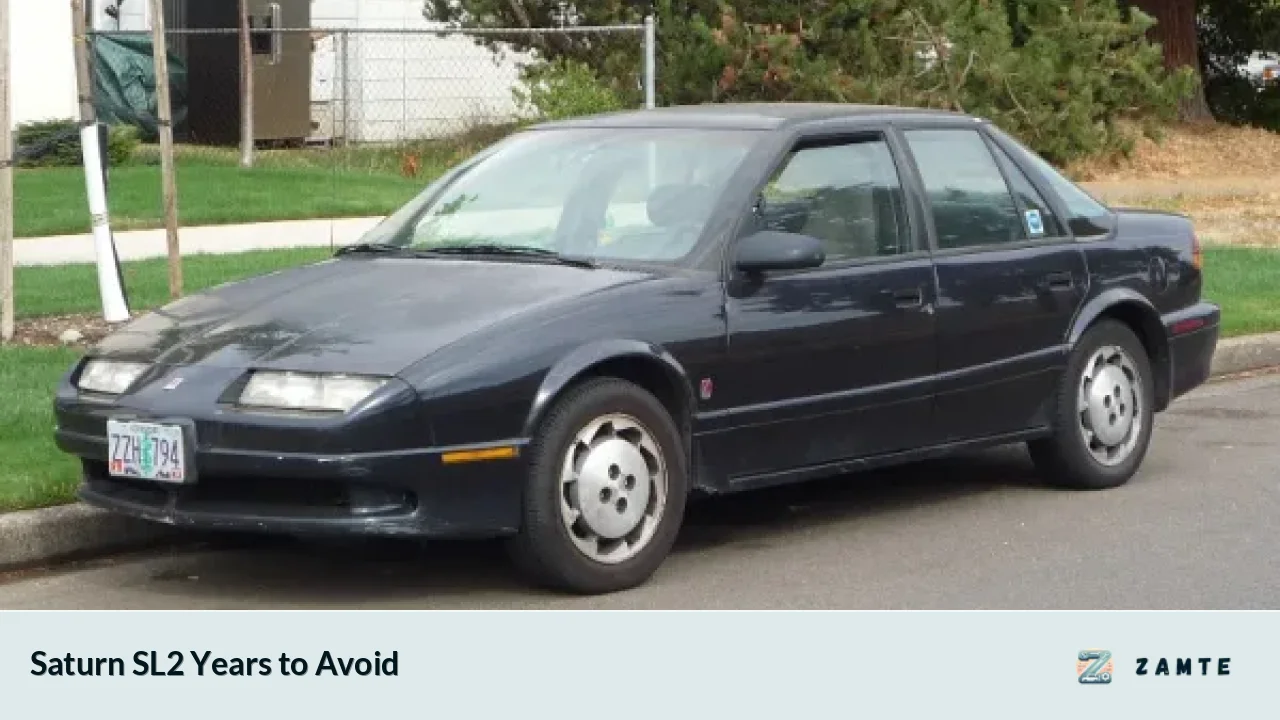The Saturn SL2 was a popular compact car produced by General Motors' Saturn division from 1991 to 2002. While it gained a reputation for affordability and fuel efficiency, certain model years were plagued with issues that potential buyers should be aware of. This guide will help you navigate the best and worst years of the Saturn SL2, focusing on common problems and how to avoid them.
| Model Year | Common Issues | Recommendation |
|---|---|---|
| 1991-1995 | Oil consumption, transmission failures | Avoid |
| 1996-1999 | Improved reliability, some oil issues | Consider with caution |
| 2000-2002 | Engine problems, electrical issues | Avoid |
Oil Consumption: The SL2's Achilles Heel
One of the most prevalent issues across all Saturn SL2 model years was excessive oil consumption. This problem was particularly severe in the earlier models (1991-1995) and persisted to some degree throughout the vehicle's production run[1][2].
The root cause of this issue was primarily due to the design of the piston rings and cylinder walls. Many owners reported having to add a quart of oil every 1,000 miles, which is far from normal. This excessive oil consumption not only led to increased maintenance costs but also posed a risk of engine damage if not monitored closely[3].
Solution: If you're considering a Saturn SL2, be prepared to check and top up oil levels frequently. Regular oil changes and using high-quality oil can help mitigate the issue to some extent.
Transmission Failures: A Costly Concern
Another significant problem, especially in the earlier models (1991-1995), was premature transmission failure. Many owners reported transmission issues as early as 100,000 miles, which is considerably low for a modern vehicle.
The automatic transmissions were particularly prone to failure, often manifesting as harsh shifting, slipping gears, or complete transmission breakdown. These issues were often expensive to repair, sometimes costing as much as $2,000 or more.
Solution: If you're looking at an SL2 from this era, a thorough inspection by a qualified mechanic is crucial. Pay special attention to the transmission during test drives, noting any unusual sounds or shifting behavior.
Engine Problems in Later Models (2000-2002)
While Saturn made efforts to improve the SL2 over its production run, the later models (2000-2002) introduced new engine-related problems. These issues included:
- Engine coolant temperature sensor failures
- Throttle position sensor malfunctions
- Crankshaft position sensor issues
These problems often resulted in poor performance, reduced fuel efficiency, and in some cases, engine stalling. The check engine light would frequently illuminate, leading to frustration for many owners.
Solution: If you're considering a 2000-2002 SL2, ensure that these sensors have been replaced or are in good working condition. Regular maintenance and prompt attention to any warning lights can help prevent more serious issues.
Electrical Issues: A Common Frustration
Across various model years, but particularly in the later models (2000-2002), electrical issues were a common complaint among Saturn SL2 owners. These problems manifested in various ways, including:
- Malfunctioning power windows
- Faulty door locks
- Intermittent dashboard lights
- Problems with the air conditioning system
These electrical gremlins were often difficult to diagnose and could be costly to repair, leading to significant frustration for owners.
Solution: When inspecting a potential SL2 purchase, thoroughly test all electrical components. Pay special attention to the power windows, door locks, and air conditioning system.
Rust and Body Issues: The Plastic Panels' Mixed Blessing
One unique feature of the Saturn SL2 was its use of plastic body panels. While these were resistant to minor dings and dents, they came with their own set of problems:
- Fading and discoloration over time
- Cracking in extreme temperatures
- Difficulty in paint matching for repairs
Additionally, while the plastic panels themselves didn't rust, the underlying metal structure was still susceptible to corrosion, particularly in areas with harsh winters and road salt use.
Solution: When inspecting an SL2, look beyond the plastic panels. Check for rust in the wheel wells, underbody, and around the windshield and rear window.
Fuel Economy: A Bright Spot
Despite its issues, the Saturn SL2 was known for its excellent fuel economy. Many owners reported achieving 30-35 mpg in mixed driving conditions, which was impressive for its time. This fuel efficiency was one of the main reasons why the SL2 remained popular despite its problems.
Consideration: If fuel economy is a priority and you're willing to deal with potential maintenance issues, an SL2 from the mid to late 1990s might be worth considering.
FAQs
- Which Saturn SL2 years should I avoid?
The 1991-1995 and 2000-2002 model years are generally considered the least reliable. - What is the most common problem with Saturn SL2?
Excessive oil consumption is the most widespread issue across all model years. - How long do Saturn SL2 engines typically last?
With proper maintenance, an SL2 engine can last 150,000-200,000 miles, but oil consumption issues may require earlier rebuilds. - Are parts still available for Saturn SL2?
Many parts are still available, but availability is decreasing as the brand has been discontinued. - Is the Saturn SL2 a good first car?
While affordable, the potential for costly repairs makes it a risky choice for a first car.
ℹ️ For more information: Worst Chrysler LHS Years: What Buyers Should Know
